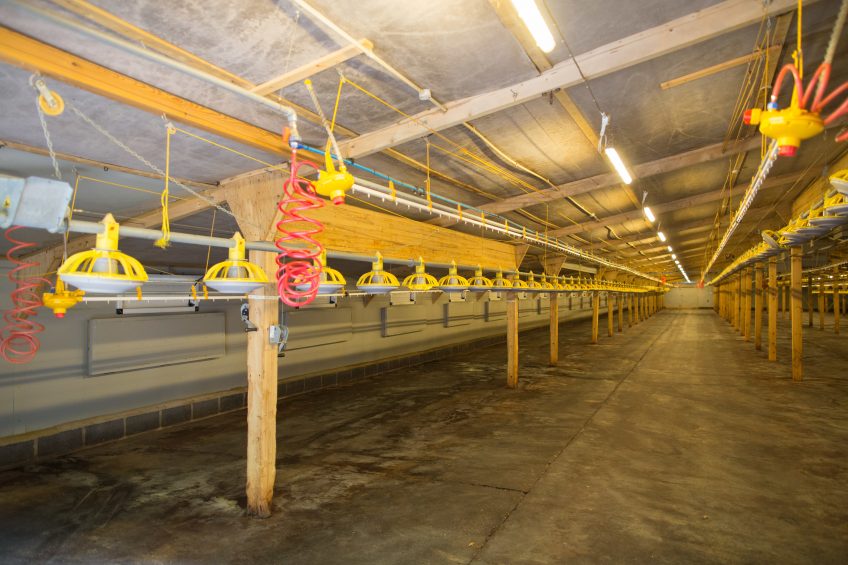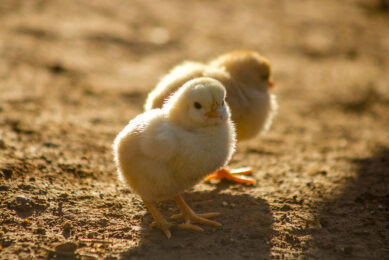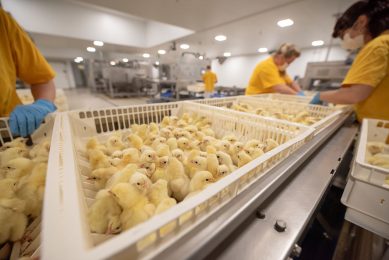Refurbishing poultry houses to lift performance

Older poultry units can hamper flock performance – but not everyone wants to shell out on a shiny new building. Fortunately, with some targeted investment it is possible to give older houses a new lease of life, as Olivia Cooper discovers.
We’ve all seen them – the 1970s poultry house eking out its last few days before being consigned to the history book. With their multiple nooks and crannies they’re difficult to keep clean, ventilation and water systems may be outdated, and overall flock performance can suffer.
If you’re the once-proud owner of one of these buildings, taking the step to replace it is a frighteningly expensive prospect. But it’s not the only option: With a bit of careful investment and attention to detail it’s possible to bring these buildings bang up to date.
Ongoing investment
At Silverstone Farm, Northamptonshire, Faccenda has five houses with 24,000 birds each – all of which were built in 1977. But through an ongoing round of investment, the company is keeping them absolutely current. “Faccenda has 18 farms and refurbishes three a year,” explains Paul Savage, farm manager at Silverstone Farm. “What it makes, it reinvests.”
Here, the poultry houses have benefited from new wall linings and resealed floors, to make them easier to keep clean, with some updated ventilation, feeding and water systems. “We’re trying to standardise as much as we can across the farms; although one house has a Draper system, the others are on a Q Farm system,” adds Mr Savage. “We also recently installed a computer system so everything is now computer-controlled. We have good connectivity here so all the data on temperature, humidity, mortality and so on is immediately uploaded.”
Previous updates include installing a window in every bay to improve natural light ingress, and a 1MW wood pellet-fired biomass boiler to heat the houses. “It heats the water to 95⁰C and runs that water to all the houses – a fan blows over the radiators and it creates a much drier atmosphere with more friable litter,” explains Mr Savage.
Cleanliness
As in any poultry house – new or old – biosecurity remains key. The farm has a double-barrier system for visitors, with outside and inside clothing and footwear, alongside disinfectant boot dips. At turnaround the farm has a seven-day clear period, during which the houses are cleaned and disinfected.
“The key to cleaning is to get as much of the debris out as possible,” says Stuart Newlands, general manager of the broiler division at Faccenda. “We use an automatic brush followed by a foam detergent that sticks to the surface. It’s then rinsed and allowed to dry – it’s critical that it’s dry before you disinfect otherwise you’re diluting the disinfectant.”
Using an orchard sprayer to apply the disinfectant should kill 99% of the 1% of bugs that remain in the shed, he adds. “We also floor burn at turnaround, at 400⁰C, and seal any gaps in the concrete with bitumen.”
Mr Savage takes swabs before and after cleanout, and sets up the houses two days before the new chicks arrive. They are preheated, with good ventilation to remove any lingering formalin gas, with 1.5-2t of bedding put down per house.
One of the most critical recent investments was in a new water system, alongside a probiotic regime to boost the birds’ natural immunity. “Water quality was overlooked for a few years, but it is so important,” says Mr Newlands. The chicks are treated with a Biacton and Zoolac probiotic gel at the hatchery, and once on-farm the LMS system sterilises the water with chlorine, and adds organic acids to boost the birds’ natural health.
Water sanitation
“There’s one water tank serving the whole farm,” explains Sophie Edenborough, water specialist at Applied Bacterial Control (ABC). “Standing water is a great opportunity for bacteria to grow, so the smaller the tank the better.”
When the chicks arrive the houses are running at 34⁰C to keep the chicks warm – but this means that water in the drinker lines can reach 27⁰C, which is not ideal for water hygiene. “We manually flush the drinker lines three times a day, although one house now has automatic flushing every two hours,” says Mr Newlands. “We’ve got 360⁰ drinker nipples so the birds can drink from any angle, and as soon as you flush the lines every nipple has a bird on it, as they love the colder water.”
The LMS system is easy to adjust, with a target water pH of 5.5, says Miss Edenborough. “At a pH of 7, chlorine is only 50% effective, so we use inorganic acids to lower the pH and make it more effective. We also measure the pH and oxidation reduction potential at the end of the drinking line, to make sure it’s at just the right level to kill any pathogenic bacteria.”
Perfomance
The combination of improved biosecurity, cleaner water and probiotic support has enabled the farm to move from campylobacter positive to campylobacter negative over the past few years. “This farm’s EPEF is now 380,” explains Mr Newlands. “There’s a 10% co-efficient between the sexes but it’s not cost effective to sex the chicks at the hatchery.”
So what’s next for this old unit, now that it has a new lease of life? “At the moment the litter is spread on local land, but we want to burn it ourselves,” says Mr Newlands. Faccenda has made significant investments by installing biomass plants on 16 of its company farms – currently 30% of them burn litter, but this will eventually rise to 50%. The litter burners produce an ash by-product – which is high in nutrient value and can be spread as a fertiliser. “The upside to the biomass heating system is we are seeing drier litter – we’ve seen our litter quantity reduce to 70% of what it was, as it’s so much drier,” he adds.
Investment in the houses will be ongoing, to ensure the highest welfare and productivity efficiencies possible. “They may be 40-year-old sheds, but they will be fit for another 20 years or more.”
Join 31,000+ subscribers
Subscribe to our newsletter to stay updated about all the need-to-know content in the poultry sector, three times a week. Beheer
Beheer








 WP Admin
WP Admin  Bewerk bericht
Bewerk bericht